Published Jun 3, 2014
Meet Emmy Award-winning Robert Blackman, Part 1
Meet Emmy Award-winning Robert Blackman, Part 1
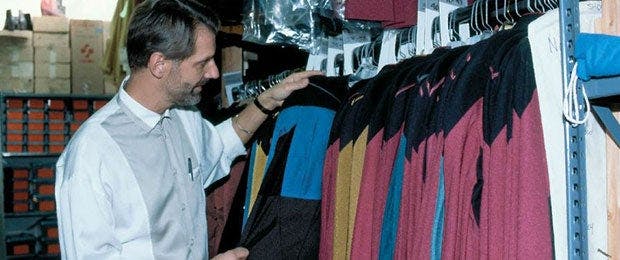
As much as anyone involved in the modern era of Star Trek, Robert Blackman had a profound effect on what fans saw on The Next Generation(seasons 3-7), Deep Space Nine, Voyager and Enterprise, as well as Generations and First Contact. Blackman’s gig as Star Trek’s costume designer spanned nearly two decades and earned him two Emmy Awards; he was nominated 10 times in total for Star Trek. Since the end of Enterprise, he has worked on Pushing Daisies (for which he won another Emmy), The Cape, Rizzoli & Isles, GCB and, most recently/currently, Glee. Blackman has been way up there on StarTrek.com’s “must-interview” list for several years now, and we’re pleased to say that he has at long last granted us an interview.

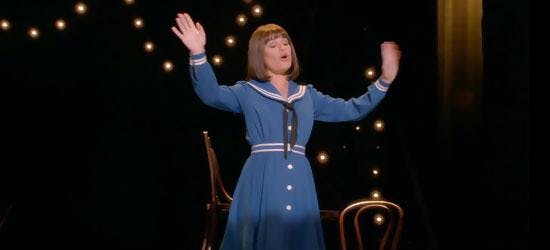
The occasion? Blackman will appear as a guest at the upcoming Creation Entertainment Official Star Trek Convention in Las Vegas, set to be held July 31 to August 3. He’s on board to do a Q&A from the stage and will also participate in the planned Cosplay Saturday, part of which will involve him serving as a judge during the Star Trek Las Vegas Costume Competition. This extensive, three-part conversation with Blackman kicks off our ongoing series of interviews with guests who’ll be appearing at Creation Entertainment’s Official Star Trek Convention in Las Vegas. Keep an eye on StarTrek.com for a new interview each week, building to the event itself.
Have you ever done a convention before?
BLACKMAN: I did two of them way back in the beginning, but I found the working schedule, particularly when we started doing two series at once, which we did for seven years, to be too demanding. The weekends became very treasured and sacred times. So I didn’t do any after those first two that I did, and if I remember, one of them was in New York at Thanksgiving and the other was a smaller one somewhere else.
How excited are you to take the stage in Vegas and talk about all your Trek work?
BLACKMAN: I’m a little apprehensive because it’s been quite a while. I’m hoping I can give people good answers. I’m not preparing anything because I really work best in a question and answer type of situation.
So think of this as a practice for your Vegas appearance.
BLACKMAN: Thank you.
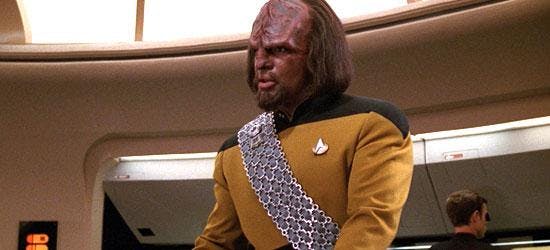
What goes through your mind even contemplating something like this upcoming convention appearance? We ask because there will be hundreds, perhaps even thousands of people running around all weekend, many of them in costumes you designed.
BLACKMAN: It is a most-unique thing. I always marvel at it. I marvel at those who have gone with a very simplistic costume and especially at those who have taken the costumes and just copied them religiously, stitch-by-stitch. Most of that happens in the Klingon world, or at least I remember that happening at the New York convention I did. There were people who’d written us about where to get materials, what to do and asked, “How do we get this made?” Many of them went off and found their own manufacturers in whatever part of the country they were from, so that they could get things like boots, buckles, all of the stuff that you can’t really buy. They really studied the making of those uniforms and did them, and I was blown away. They were a little bit more personalized than maybe we’d make them, but so many of the costumes I saw were as good, stitch-for-stitch, as what we had done. And I’m sure there will be Klingons and all sorts of other costumes in Vegas.
Go all the way back. How did you first connect with Star Trek: The Next Generation?
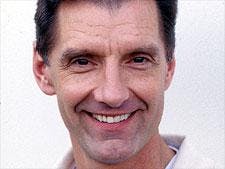
BLACKMAN: I was on the Paramount lot. I’d been doing features. Then the writers’ strike happened, which slowed everything down for everyone. So I did a television series for Gary David Goldberg, Day By Day, which was about a daycare center. It went for two seasons. It was fun. When it ended, I was wrapping up and was over in wardrobe. There was a guy there, Walt Hoffman, who ran wardrobe, who said, “What are you doing next?” I said, “I’m not really doing anything yet.” And Walt said, “Well, you know, they’re looking for people at Star Trek.” I said, “Well, I’m… I don’t know. That’s all this future stuff and I’m definitely not a futurist.” Before I came to Los Angeles, I’d done theater exclusively. So I’d spent about 20 years in the 19th century. It just turned out that way, that most of the plays I did ranged from about 1800 to 1918. There were modern ones thrown in, but mostly my heavy design work was 19th century. So I said, “I don’t know how to do that. I have no idea how to do that. I think I’ll have to pass on that.” He said, “OK.”
You were actually semi-attached to another show, but everything changed a day or two later, right?
BLACKMAN: Walt said, “Look, could you do me a personal favor.” I said, “Sure. What is it?” He said, “Well, they’re having trouble having people come in for Star Trek because everybody just thinks it’s people walking around in pajamas. So would you just go in as a favor in for me, so I’m sending somebody in?” I reluctantly agreed and packed up all my portfolio stuff, which was primarily theater and some movies. I went in and I met with (TNG producer-director) David Livingston. We had a very long interview. I didn’t want the job, so I was charming. I wasn’t hustling or anything like that. I wasn’t nervous at all because I just didn’t think I was going to get it, nor did I want it. But I said to David, “I’m going to be working on something for Showtime, Nightmare Classics. If you’re interested in me, you just have to get back to me by this date because that gives them time to replace me, midseason.” They were doing four episodes to a season early on. He said, “Sure, sure, sure.”
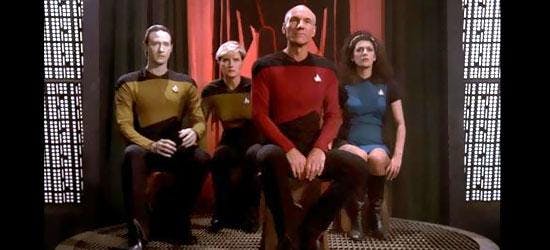
Then you and your agent didn’t hear anything for a while until, suddenly the Star Trek office called your agent to say they wanted to hire you. You said yes, but you had a proviso…
BLACKMAN: I told my agent, “Tell them I can’t start on the day they want me to start.” She said, “Well, they’re very insistent that you start on this date.” I said, “Well, just tell them that the man who’s honoring his word on a contract he’s in is the man they’re now hiring.” So they agreed to postpone my start date and then I started. They’d not wrapped season two of TNG yet, so I met all the actors. I’d known Jonathan Frakes from theaters. We had worked on a couple of plays together. So it was kind of a good thing. What I had to learn was that my understanding of the Elizabethan doublet and dance clothes was going to be a benefit to this situation because everything was either extraordinary doublets, if you will, or unitards. Essentially, William Theiss had designed a unitard for the uniforms. They were one-piece, stretched things. When I came in, Patrick (Stewart) and all the guys, particularly, were just in agony because they were wrecking their backs and wrecking their shoulders. They were all having to go in for lots of massage and chiropractic work and all of this stuff. Patrick was pretty adamant about getting out of the uniform.
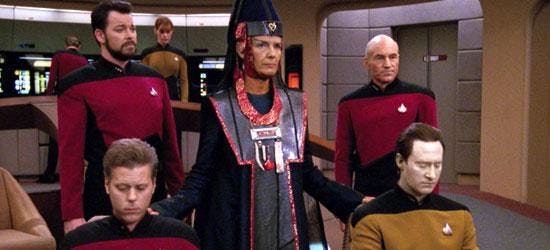
So, you basically discovered, after the fact, that you were brought in to come up with other uniform ideas….
BLACKMAN: I started playing around. I watched a lot of episodes and I thought, “These guys need to look more noble, more pure. They look a little bit like they are in Dr. Denton’s, in a way. They need to look more heroic,” especially with Patrick, because he was so English it almost looked strangely counter to his whole demeanor, the William Ware Theiss uniform. So I started playing around with two-piece things and, with Rick Berman, we evolved it into the Eisenhower jacket. It had many metamorphoses through the beginning of season three, and you can see them. It starts looking one way, and each week it changes drastically, until we finally had one that work. And we stuck with that. So we kept all of the color blocking the same. That all remained the same, essentially, but I got rid of a lot of detail, which I thought drew focus from the face. And I put on these collars, these slightly curved, dignified collars that I felt really focused the face. Again, this was especially on Patrick because, as you know, a lot of episodes, before the commercial break, froze on him and either had a push-in or a pull-out. So that seemed successful, and that’s how I got the job and that’s how the uniforms got changed.
Visit StarTrek.com again tomorrow for part two of our three-part interview with Robert Blackman. And visit creationent.com to purchase tickets to the Official Star Trek Convention in Las Vegas.

